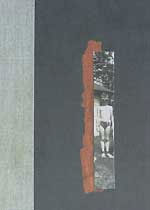Although the calendar says it’s spring tomorrow, Mother Nature is having none of it here in Toronto. As a howling wind swept around my house in the east end yesterday, variously tossing down rain, snow, sleet and hail in succession, a little package arrived from Edmonton’s NeWest Press. When I opened the package, it was as if a warm spring breeze wafted out …

Flipping through, sampling intriguing dashes of poetry from Jenna Butler’s third collection, I found I was as enamoured by the fresh first impressions of the physical book as I was by the words on the page. No surprise, then, to discover that this book’s design was imagined with the signature subtlety, attention to detail and fidelity to the subject matter that characterizes all of Natalie Olsen’s fine work. (Learn more about her work and creative process at her Kisscut Design blog.)




The lattice of leaves and tendrils, underpinning the themes and images of nature throughout Butler’s collection, is echoed throughout the book. Swoon … even wee leaves sprout from the page numbers. Spring is in the air!
Just as the book’s epigraph from George Melnyk states, “the visual turns visionary.”
Thank you to NeWest Press for providing a review copy of Seldom Seen Road, by Jenna Butler.





















